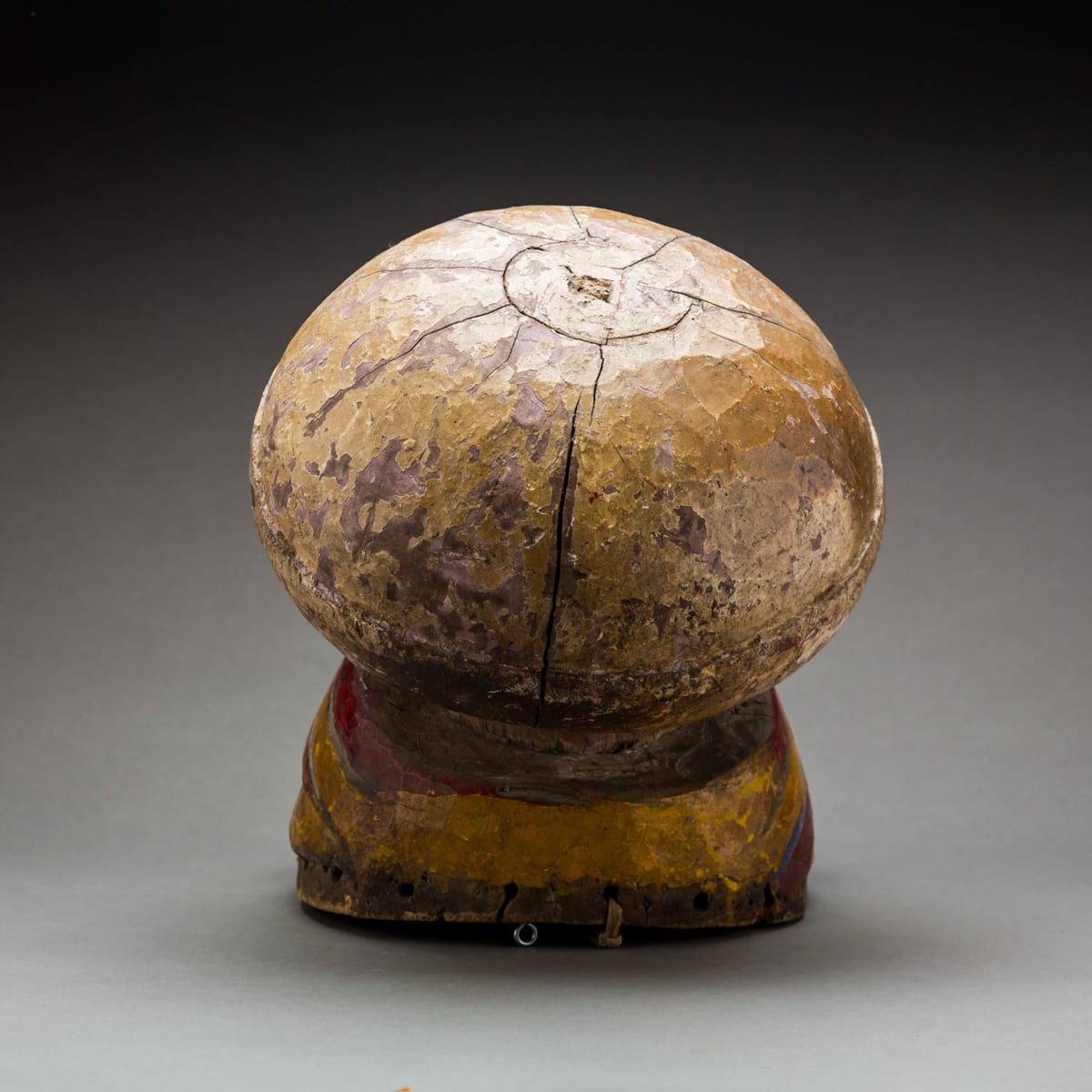Yoruba Gelede Mask, 1900 CE - 1925 CE
Wood
35.6 x 22.9 cm
14 x 9 in
14 x 9 in
LSO.202
Further images
The Yoruba are a Central Nigerian tribal group, originally descended from a Hausa migration from the northeast in about 900 AD. A small kingdom – Ile Ife – was founded...
The Yoruba are a Central Nigerian tribal group, originally descended from a Hausa migration from the northeast in about 900 AD. A small kingdom – Ile Ife – was founded by Oduduwa, followed by great sociopolitical expansion into Southwest Nigeria, Benin, and Togo. The influence of the city was felt far beyond these boundaries, however, and many smaller political entities were held under its sway. Communities were presided over by the Oba (king) and various senates (Ogboni), and councils made up of guild leaders, merchants and the lesser aristocracy (related to the Oba). The Yoruba have an exceptionally rich and diverse mythology, history and religious context, all of which are directly linked to their artistic output; in Yoruba society, this grouped heritage is known as the Itan. This very fine polychrome Yoruba mask is intimately associated with rituals performed by mens societies bent upon the protection of the living. Specifically, Gelede is intended to honour the spiritual aspects of femininity, and to prevent these from becomning destructive to the society to which they belong. Angered female spirits (Aje) may destroy entire communities; for this reason, they are placated by dancing performances so that their power is directed towards the benefits of the society. This specimen is unusual in terms of size, decoration and colour; each village and area had distinctive patterns of Gelede masks that reflect some facet of their social organisation or mythology. It is exceptional in terms of preservation, for while it shows clear signs of use wear, it has not been damaged through neglect or exposure to the elements. This is an exceptional mask.











